1. Embrace Natural Materials from the Ground Up
There’s something magical about the way natural textures transform a space. The earthy cottage style starts from the ground — literally. Think of wide-plank wooden floors, jute rugs, or raw terracotta tiles that feel warm underfoot. These textures set the tone for everything else: organic, tactile, and deeply inviting.
Even small touches like a rattan chair or a reclaimed wood side table can introduce the warmth that defines cottage living. The goal isn’t perfection but harmony — the kind that feels like a deep exhale after a long day.
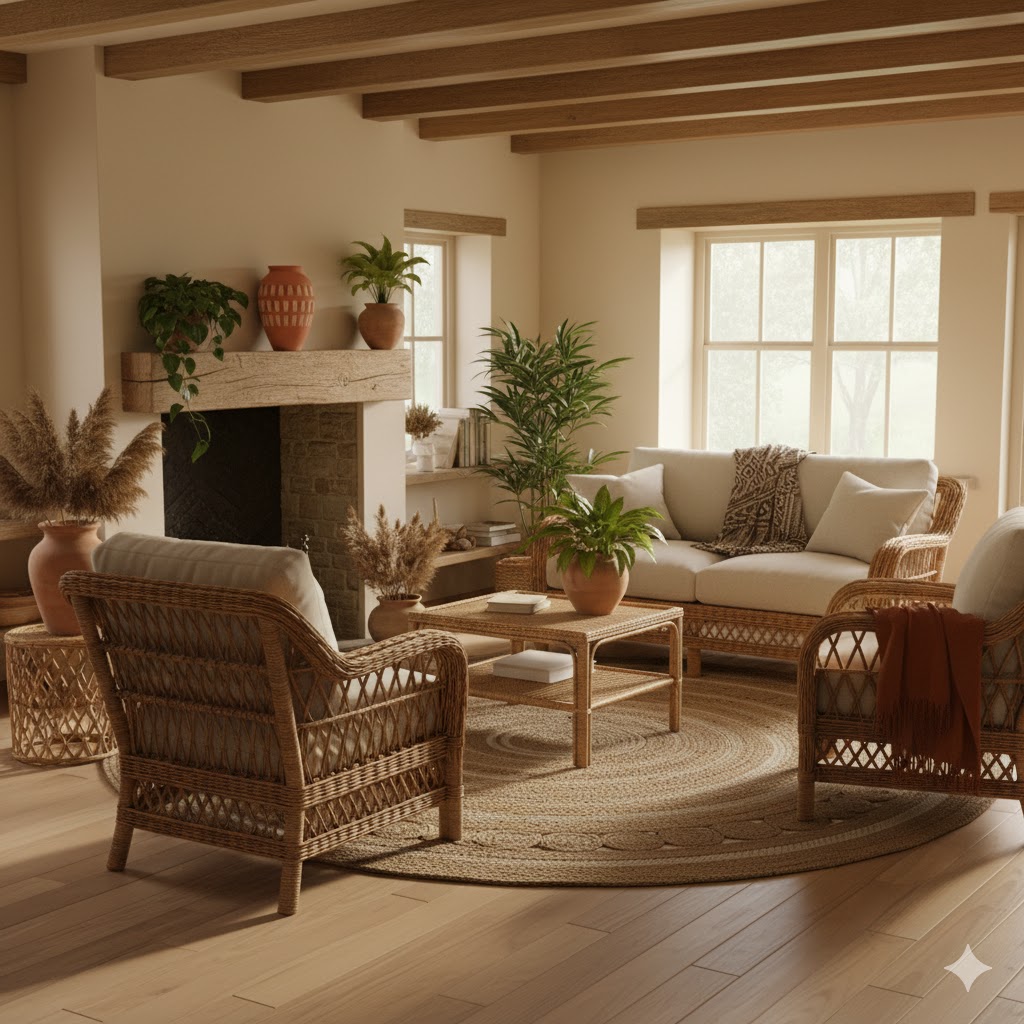
2. Layer Soft, Earth-Toned Textiles
Soft textiles are at the heart of the earthy cottage aesthetic. Mix natural fabrics like linen, cotton, and wool in hues inspired by nature — muted greens, clay browns, sand, and stone. Layering these textures makes the room feel lived-in and loved.
Try draping a handwoven throw across the sofa or layering neutral pillows with slightly different tones. Imperfect combinations work best here; that slightly crinkled linen or frayed-edge pillow gives character and charm.
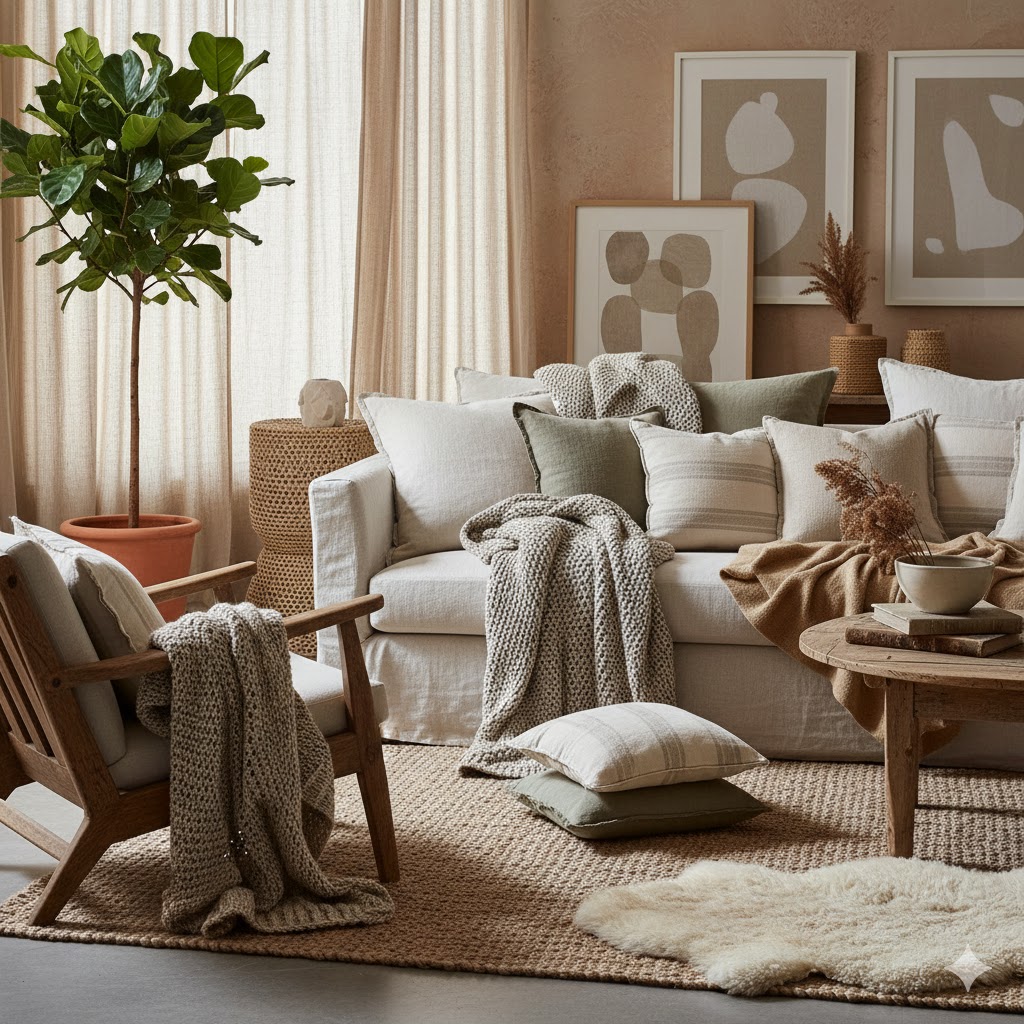
3. Add Stone and Clay Accents
You don’t need to live in a countryside cottage to bring in that grounded, natural feel. Clay vases, ceramic bowls, and rough stone candle holders add a timeless charm. Whether your home is urban or rural, these raw materials bring the outdoors in.
Cluster a few handmade clay vessels on a sideboard or place a stoneware bowl filled with dried herbs on the coffee table — small touches that create visual grounding.
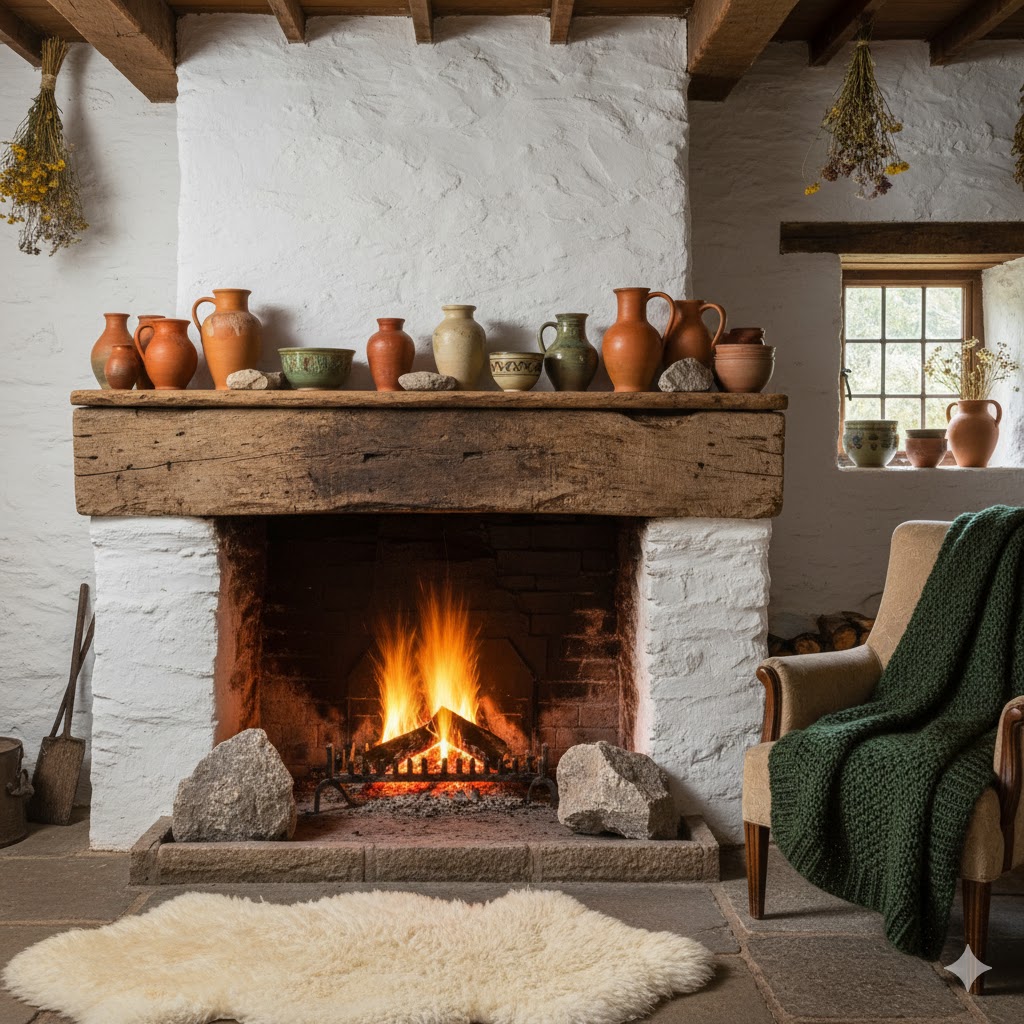
4. Choose an Earthy, Muted Color Palette
Color makes or breaks this aesthetic. Skip the bright whites and go for off-whites, creamy taupes, and warm beiges mixed with olive, ochre, and rust. These hues feel timeless and welcoming — like a home that’s part of the landscape.
If you’re painting walls, go for matte finishes that absorb light softly. Add contrast through deeper wood tones, aged metals, or soft charcoal accents.
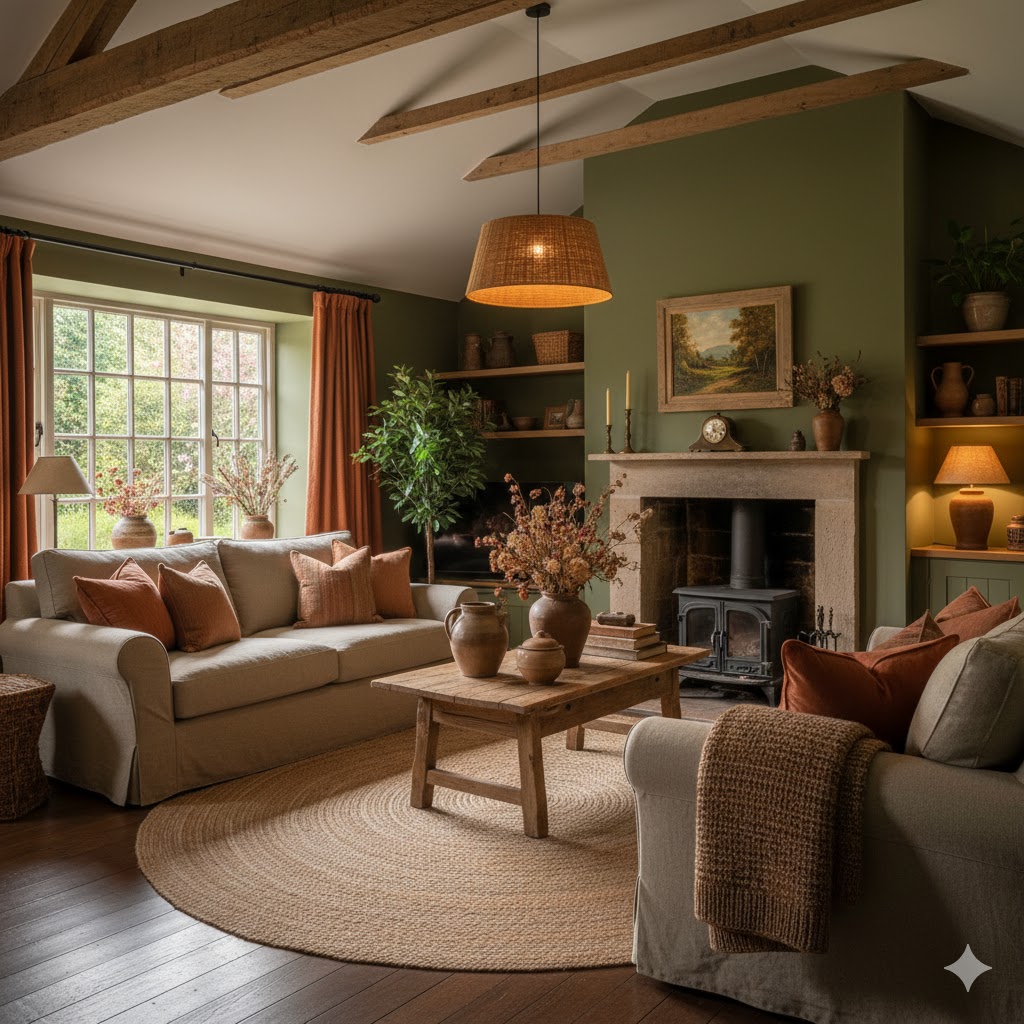
5. Mix Vintage and Handmade Pieces
The best cottage interiors don’t look designed — they look collected over time. Blend vintage finds with handmade crafts for a home full of stories. A weathered trunk as a coffee table or mismatched pottery from local artisans adds authenticity that can’t be replicated in mass-produced decor.
Visit flea markets, estate sales, or even your grandmother’s attic. The goal is to create a home that feels nostalgic but never outdated.
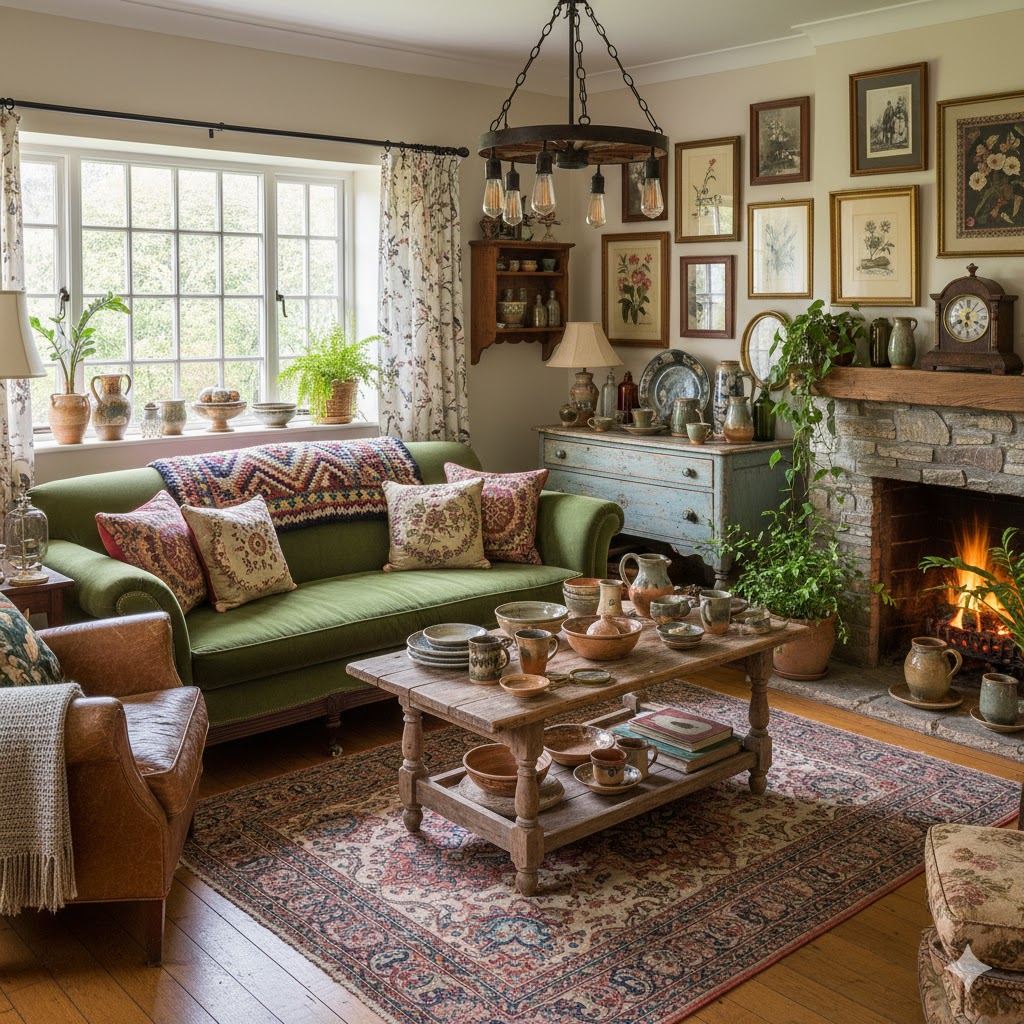
6. Add Greenery in Every Corner
Plants are the lifeblood of an earthy home. From leafy ferns to climbing ivy and delicate herbs in clay pots — they add life, color, and a sense of continuity with nature. In a cottage-inspired home, plants shouldn’t feel overly arranged; instead, let them grow freely and spill over their containers.
Mix heights and textures: tall fiddle leaf figs beside trailing pothos or soft moss bowls near windowsills.
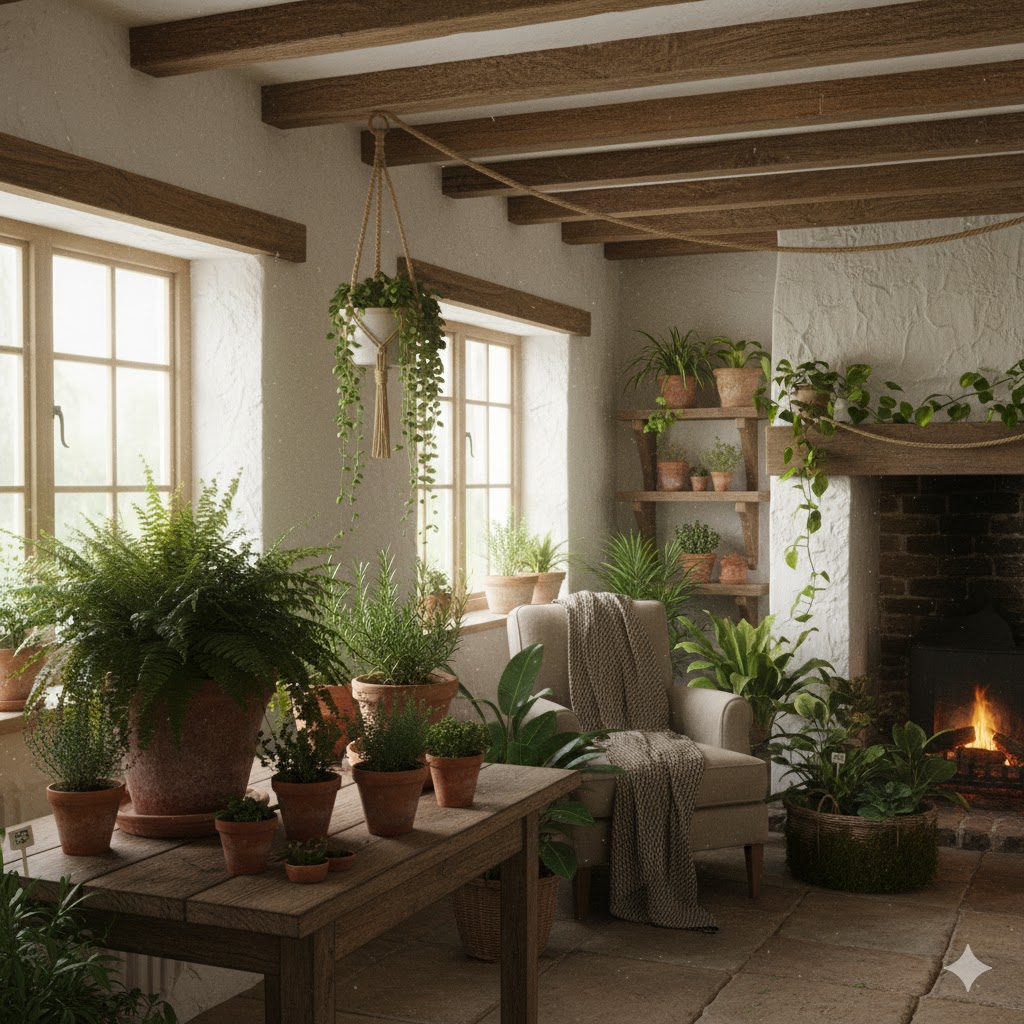
7. Choose Lighting that Feels Natural and Soft
The right lighting brings the whole look together. Avoid harsh, bright overhead lights — they break the cozy spell. Instead, use warm bulbs, textured lampshades, and layered lighting from different sources.
Think vintage-style sconces, woven pendant lights, or candles scattered around for evening ambiance. The light should feel like sunset — soft, golden, and calming.
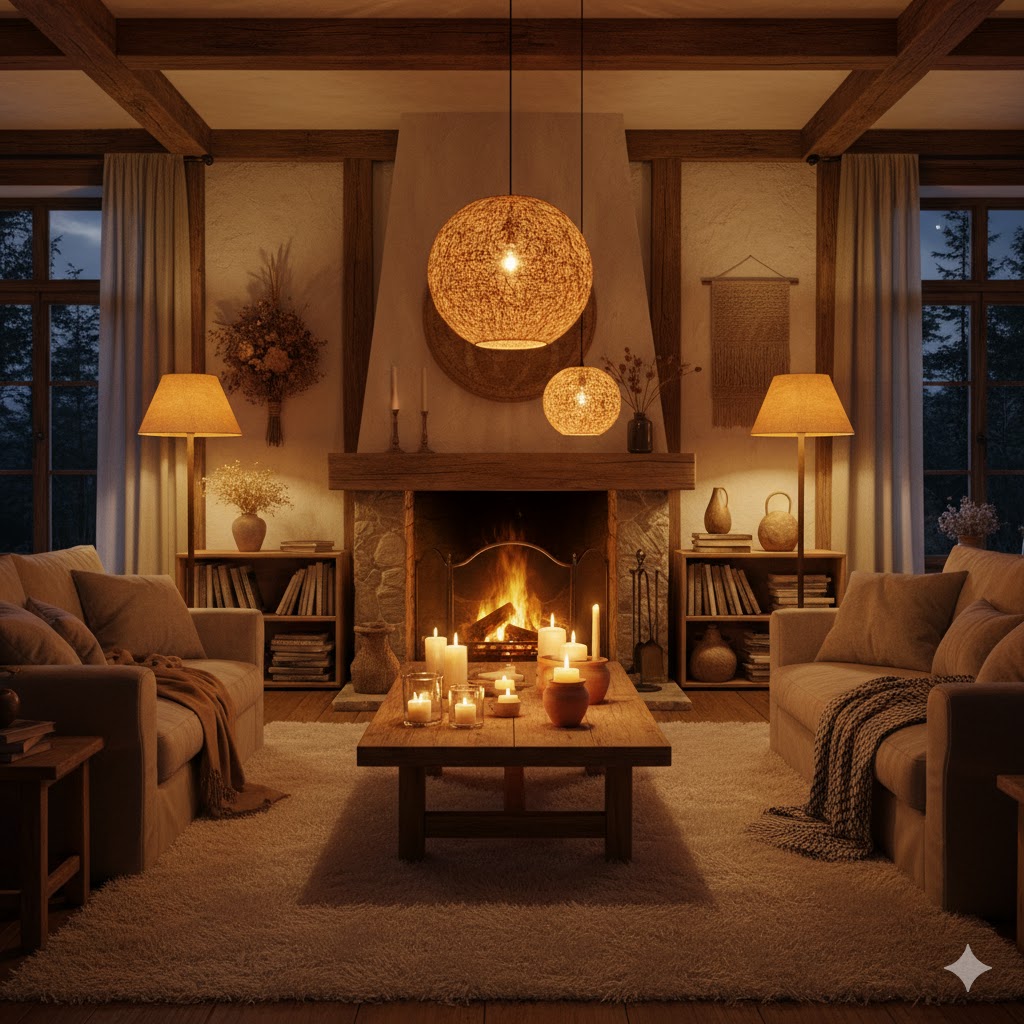
8. Showcase Exposed Wood and Natural Imperfections
Cottage decor celebrates imperfection — the knots in the wood, the uneven edges of a handmade bowl, the slightly cracked glaze of a ceramic vase. These details make the home feel alive.
If your space has exposed beams, show them off. If not, add wooden touches through open shelving, frames, or furniture legs. Keep finishes matte or lightly oiled to maintain their organic charm.
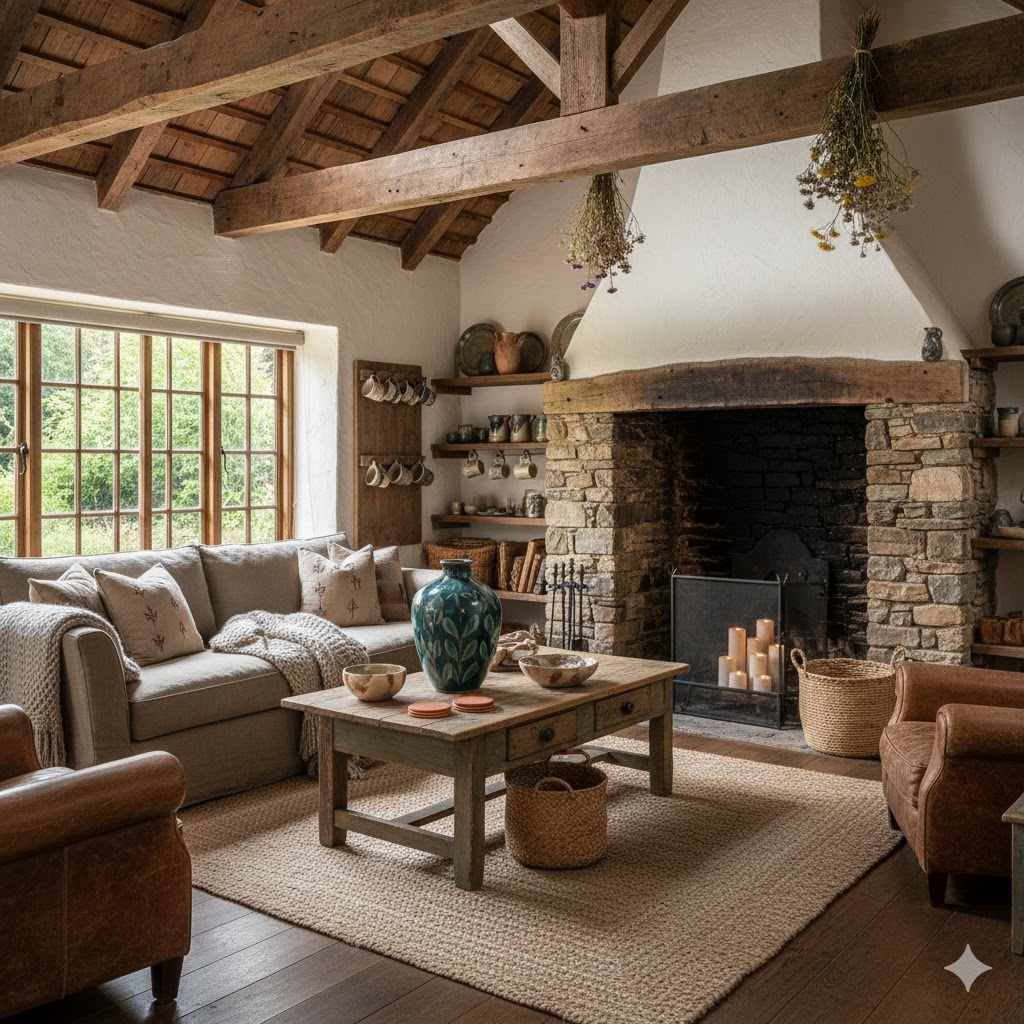
9. Incorporate Cozy Reading Nooks and Corners
Every cottage-style home deserves at least one cozy corner — a reading nook, a window seat, or a comfy chair by the fire. Add a soft throw, a small lamp, and a nearby shelf of well-loved books.
This touch creates warmth and encourages slowing down — an essential part of cottage living. It’s not just decor; it’s a lifestyle.
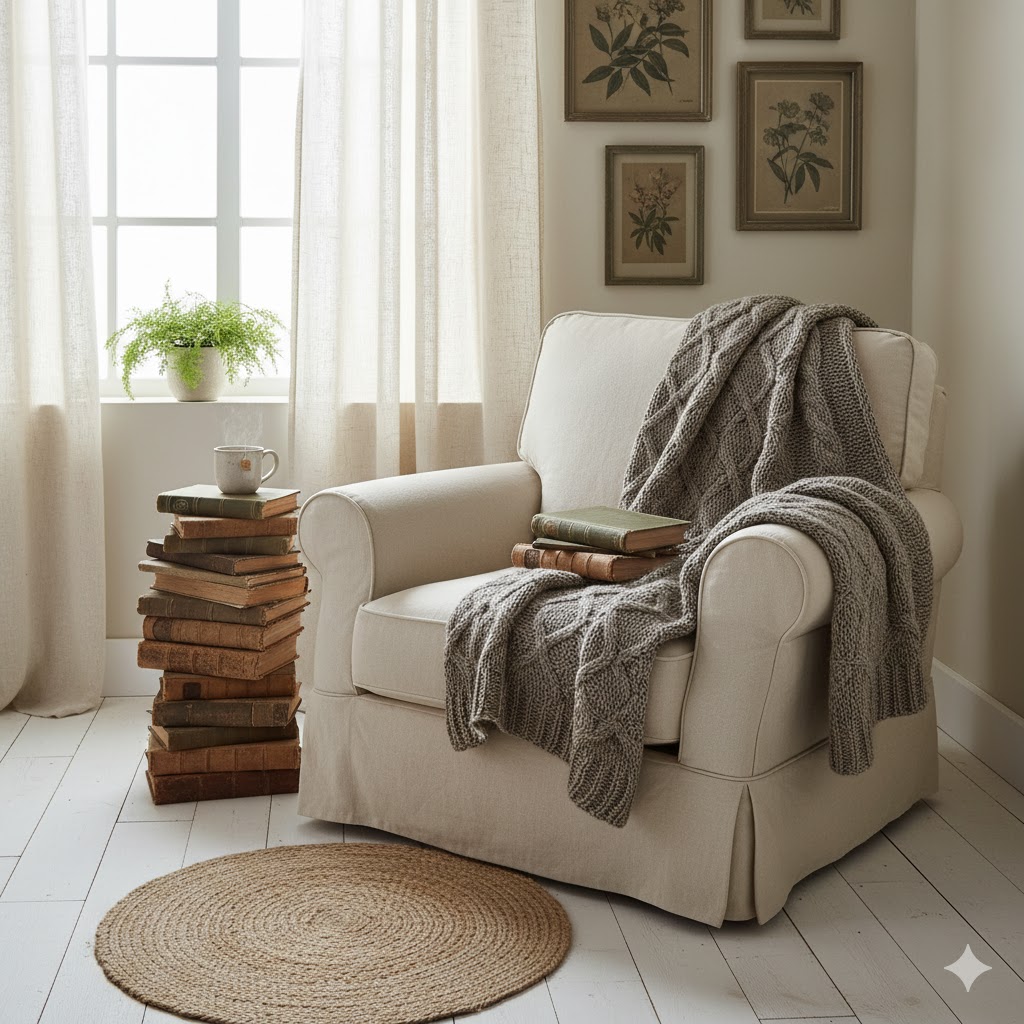
10. Bring in Woven and Rattan Elements
Rattan, wicker, and seagrass are staples of earthy interiors. Their tactile surfaces and neutral tones blend perfectly with wood and linen. Use them in baskets, pendant lights, or accent chairs.
They add texture and craftsmanship — the kind that looks handmade, honest, and effortlessly stylish.
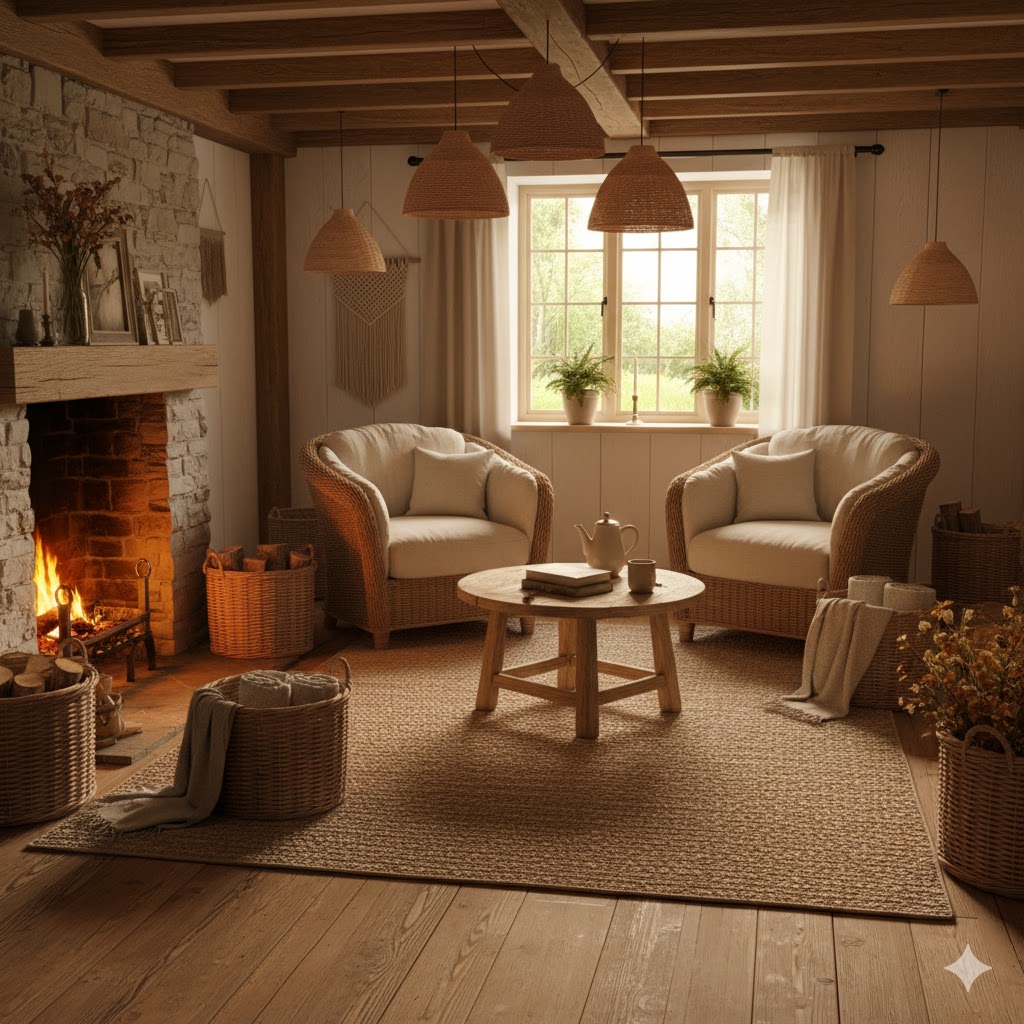
11. Display Art that Echoes Nature
When it comes to artwork, think organic forms and nature-inspired themes — soft landscapes, botanical prints, or abstract art in muted tones. Avoid anything overly glossy or modern; choose pieces that evoke calm and timelessness.
You can even frame pressed flowers or sketches from local artists for a more personal touch.
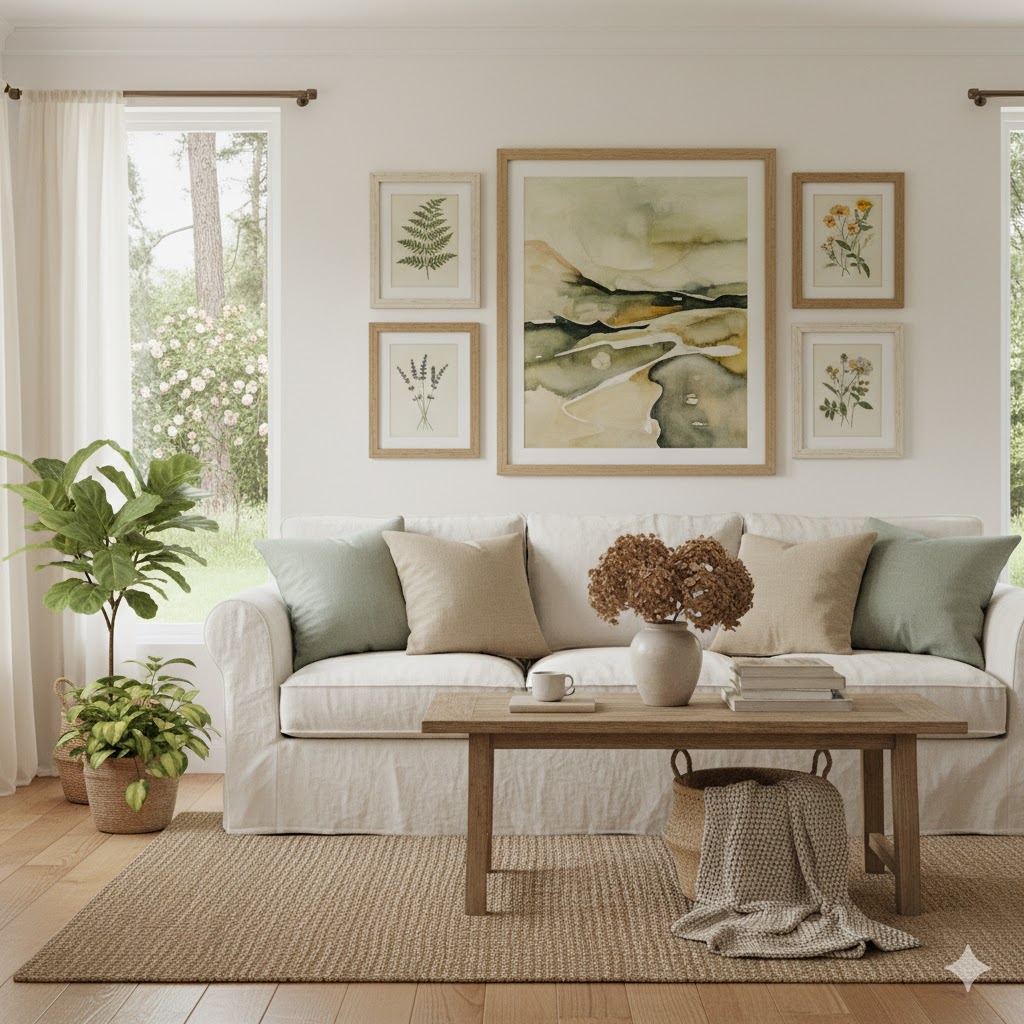
12. Add Layers of Scent and Sound
An often-overlooked part of home decor is ambiance. Earthy cottage homes feel alive not only in visuals but in sensory details. Burn woodsy candles — cedar, sage, or sandalwood — and play soft instrumental music or the faint hum of a record player.
These quiet layers make the space emotionally grounding — a refuge from the rush of modern life.
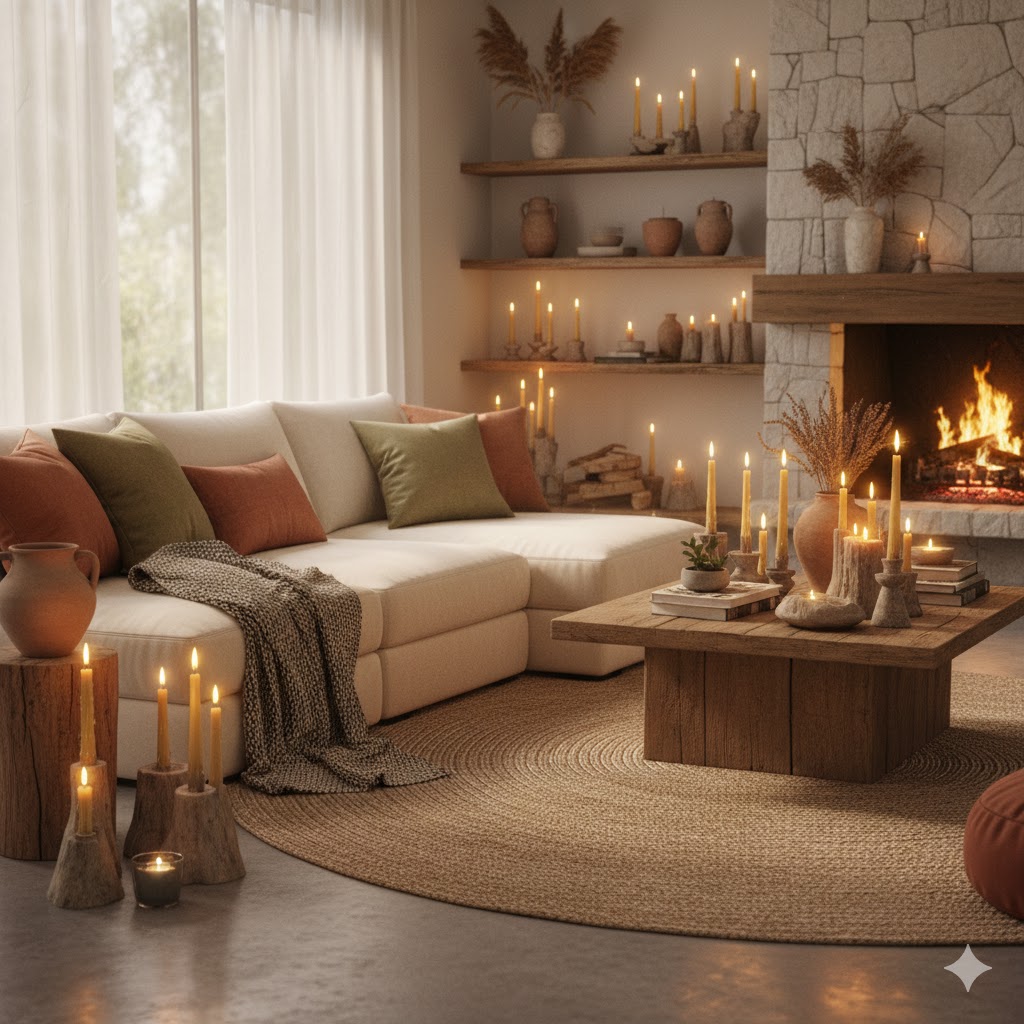
13. Let Time Shape the Space
The final and perhaps most beautiful part of the earthy cottage aesthetic is patience. Let your home evolve naturally. Don’t rush to fill every corner — allow time and experience to guide what belongs.
The scratches on a coffee table, the faded patina on brass, or the sun-softened curtains all become part of your home’s story. Earthy cottage decor isn’t about chasing trends — it’s about letting authenticity shine.
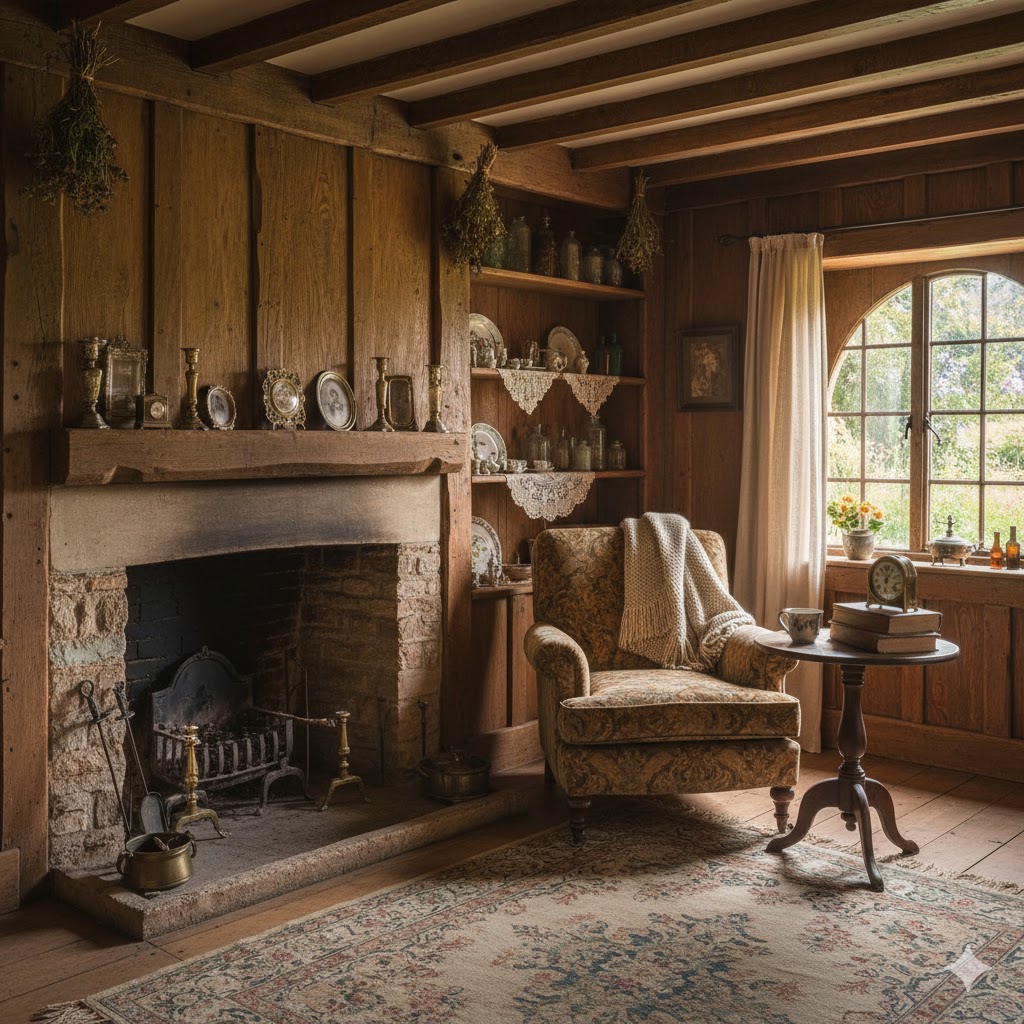
Conclusion
The earthy cottage style is less about design rules and more about feeling — a quiet return to the simple, organic, and imperfect beauty of life. It’s about walking barefoot on wood floors, letting sunlight dance on textured walls, and surrounding yourself with things that feel honest.
Each choice — from clay pots to woven baskets — carries a sense of grounding and calm. And when you’re done, your home doesn’t just look cozy. It feels like home — warm, familiar, and full of heart.
Before you go…. Your home decor is a significant financial investment—don’t let an accident, like spills or moving mishaps, ruin your aesthetic peace! Protecting those high-value decor items (especially custom pieces!) requires more than basic coverage; you need a solid home contents insurance policy or specific personal property riders. Finding the best homeowners insurance or renters insurance that covers your unique decor is key to keeping your space beautiful and your wallet safe.
For truly high-value or custom furnishings, specialist companies like Chubb offer comprehensive policies, though their average annual cost may be upward of $9,500 for high-value homes. For standard policies, the national homeowner average is around $2,100 per year, but this varies. Thankfully, renters insurance is much more affordable, often costing just $150 to $300 per year. The key is “scheduled personal property” coverage for your valuables; this can cost as little as $50 to $200 annually per $10,000 in value for art and antiques. National carriers like State Farm, GEICO, Allstate, and Progressive are great starting points for comparison.
Getting a quote is simple and super fast now, so you have no excuse not to check your coverage today.